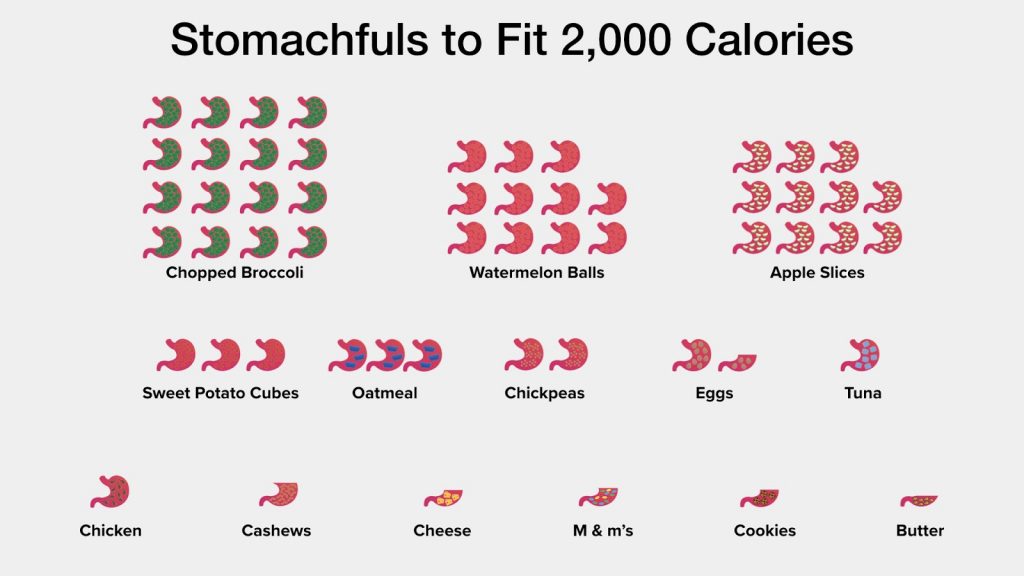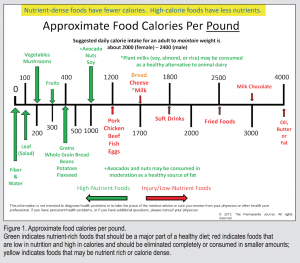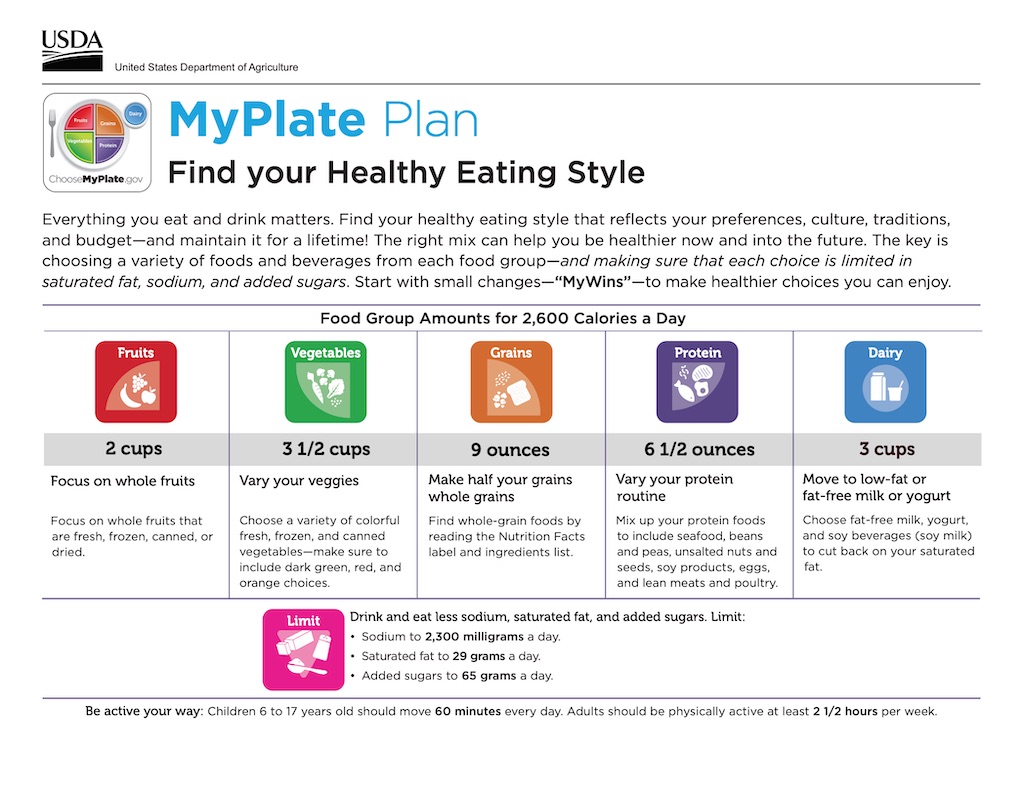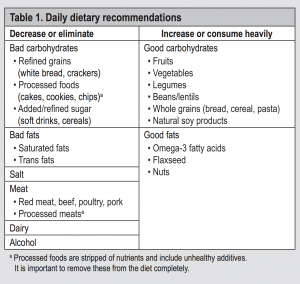Wellness: Nutrition, Weight & Fitness
I’m not a registered dietitian, and my recommendations are based on what I’ve found to work for me (n=1, 6’1″ 185lb 33yo moderately active male)
Some simple weight, diet, and fitness tips are below.
As you do further research, I implore you to remember that you shouldn’t believe everything you read on the internet. Use a tool that will help you find studies like Google Scholar, not blog posts.
Loosing Weight (Or Maintaining)
To loose weight, eat fewer calories than your body burns, on average. Your calorie budget (click here to calculate) is your BMR plus your exercise.
Below, green indicates nutrient-rich foods that should be a major part of a healthy diet; red indicates foods that are low in nutrition and high in calories and should be eliminated completely or consumed in smaller amounts.
Instead of counting calories, I prefer to just follow a meal plan because if you actually eat the recommended daily cups of fruits and veggies, I find it’s hard to overeat.


This makes my basal metabolic rate (BMR) approximately 1,855 Calories per day. My exercise represents about another 650 Calories per day, for a total about 2,500 Calories per day.
The Body Weight Planner (nih.gov) is an excellent tool for calculating your BMR and getting nutritional information.
Did You Know?
1oz of chocolate = 150 calories = 23 minutes of walking.
1/4lb of raw beef = 200 calories = 6 cups of vegetables.
12oz orange juice = 36g sugar = 3 oranges.
Diet
The USDA simply says “Choose a healthy eating pattern at an appropriate calorie level” and this is good advice.
One Sentence Diet
Paraphrased from what my nutritionist wife, Amanda Stegmann MS, tells me:
Eat a diet that’s balanced and calorically appropriate, avoid foods you couldn’t make in your kitchen and read labels to avoid corn syrup.
MyPlate Plan
I also like the USDA’s MyPlate Plan approach. You 1) approximate your caloric needs then 2) click the meal plan that shows how many service of each food group you need.
For me, I find if I hit my daily fruit and veges number then the others come naturally.

Eat This Much: Automatic Meal Planner
For the lazy, eatthismuch.com‘s Automatic Meal Planner will generate weekly meal plans for free tailored to your preferences, and automatically generate a shopping list.
A Weekly Diet
Alton Brown’s diet recommendations are a good place to start:
- Daily: Leafy greens, nuts, carrots, green tea, whole grains & fruits
- 3x Weekly: Yogurt, cauliflower, broccoli, sweet potato, avocado, oily fish, tofu
- 1x Weekly: Red meat, white starch, desserts, alcohol
- Never: Soda, processed meals, canned soups, “diet” anything, fast food
The Decrease/Increase “Diet”
Fitness
I play hoops a few times a week and make it to a Tabata class often which is time consuming and expensive, but I also do free, short, simple things too.
7-minute Workout
The New York Times put together a 12 exercise plan requiring no equipment, available free at https://well.blogs.nytimes.com/2013/05/09/the-scientific-7-minute-workout/. I like to do this one after my lunch break to re-energize, instead of an afternoon coffee.
I programmed it into the Tabata Timer app (see my post) so it goes straight into my fitness tracker.
Google Fit
If you use Google Fit and you walk around, it automatically tracks your activity and shows you a nice little graphic with the goal of keeping your heart healthy. Hard to argue with that!
Heart Points to stay healthy
To keep your heart healthy, the American Heart Association and World Health Organization encourage staying active. Each week, they recommend you do at least 150 minutes of moderate activity or 75 minutes of vigorous activity.
Wellness Research
The 2020 paper “Healthy lifestyle and life expectancy” found that you can live an extra 10+ years, by doing 4 or 5 of the following:
- never smoking
- a healthy, balanced diet
- 30 minutes of moderate or vigorous activity every day
- a body mass index (BMI) between 18.5 and 24.9
- no more alcohol than a small glass of wine a day for women and a pint of beer for men
A CALL TO ACTION (2015)
By Balazs I Bodai
We, as caregivers, are letting our patients die by not taking a strong, proactive role in promoting healthy eating and an active lifestyle, and encouraging emotional resilience. These principles are the cornerstone of the rapidly emerging subspecialty known as lifestyle medicine. Current medical practice is reactive: surgery or a prescription for every illness. This needs to change. A paradigm shift to lifestyle medicine must be implemented immediately.
Dramatic effects using lifestyle interventions have been demonstrated in patients with chronic conditions, which now include breast cancer. Several large studies have conclusively shown that diet and exercise modifications can significantly improve total health. One prospective study of 23,000 participants evaluated adherence to 4 recommendations: no tobacco use, 30 minutes of exercise 5 times per week, maintaining a body mass index less than 30 kg/m2 , and eating a healthy diet (high consumption of fruits, vegetables, legumes, and whole grains, and low consumption of meat). People who adhered to these 4 recommendations had an overall 78% lower risk for development of a chronic condition during an approximately 8-year timeframe. Furthermore, in those adhering to the recommendations, there was a 93% reduced risk of diabetes mellitus, an 81% reduced risk of myocardial infarction, and a 36% reduction in the risk of cancer.
Ample evidence exists to support the avocation of a diet based on the recommendations noted in Table 1. In addition, a whole-food, plant-based diet tends to promote a healthy body mass index, which is associated with, yet again, a lower risk of all common cancers. Dietary principles cannot be fully addressed without consideration of caloric density. Caloric density refers to foods that may or may not provide high amounts of vitamins and nutrients, but contain higher levels of calories. High-nutrient foods have fewer calories per pound in contrast to low-nutrient foods (Figure 1). A healthy diet should remain in the green zone as much as possible and constitute the bulk of food intake.
Sadly, because profit motives play a large role in the business of health care, the delivery of care and the care of patients is often politicized. Most chronic conditions are influenced by lifestyle and account for more than 75% of health care costs. Since 2009, more than 17% of the US gross national product has been spent on health care, amounting to more than $2 trillion. Few, if any, of these dollars have been spent on identifying the true underlying etiologies of these chronic conditions. Lifestyle changes have taken a backseat to disease treatment. If we continue on the pathway of treating risk factors and developed disease, we will bankrupt the health care system in the near future. Costs for care will continue to escalate; lives will continue to be lost.
It is time for the medical community to intervene and to intervene aggressively. We are not providing the proper treatment when confronting conditions that can be prevented and may even be reversed with lifestyle change and education. Current and future physicians must be trained in lifestyle medicine. The neglect of both the root cause of disease and corrective interventions continues to further the development of chronic conditions and ultimately demise (Figure 2). Lifestyle management courses should be required annual training for all health care employees, optimally as we do annual training for corporate compliance. It is time to prevent disease in all aspects of our lives and the lives of the people we love. It is time to change our health destiny by changing our hearts and minds from an unhealthy lifestyle to a total health lifestyle. It is time to move from disease to health where we live, learn, work, pray, and play. It is time to eat healthy, be active, and resolve conflict.
The evidence is irrefutable and the message is clear. We are charged with providing patients with the information they need to live a long, healthy life, which can readily be accomplished through lifestyle education. We, as caregivers, owe them that.
Bodai BI, Tuso P. Breast Cancer Survivorship: A Comprehensive Review of Long-Term Medical Issues and Lifestyle Recommendations. Perm J 2015 Spring;19(2):48-79. DOI: https://doi.org/10.7812/TPP/14-241.
